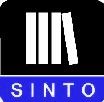
Last week I attended the CILIP Y&H member's day at the National Science Learning Centre, York. While I was there Emma Jones gave me a quick introduction to their Resource Bank and she has kindly provided the following information.
Science Learning Centres Resource Bank
The Science Learning Centres Resource Bank was quietly added to the Science Learning Centres portal last year and can be accessed from the ‘Resources’ link on our homepage.
It has been populated with a broad selection of resources: from a large array of examples of how science stories are reported in leading newspapers, websites with useful teaching resources such as: Atmosphere, Climate & Environment: Information and teaching resource (includes practical information sheets and related fun games and puzzles), through to details on a group of Wellcome Trust funded projects titled ‘Creative Encounters’, that have found innovative ways to communicate about science with young people.
A number of collections form the Resource Bank:
The Agenda: policy and white papers related to the Science Education community and professional organisations
The Exchange: resources created by and for teachers that can be edited or reused
Science Links: web sites and pages of interest selected by Science Learning Centre staff and our users
New collections will be available over the coming year for Controversial Issues and Creative Encounters
Browse for resources by Subject, Age range, Audience type, Collection or any combination of these. Keywords can also be used to help you locate a resource quickly. A full text search option finds keywords when used within a resource (on a webpage or in a PowerPoint for example).
If you have a favourite site or resource you have created and would like to share it, all registered users can contribute resources to both ‘The Exchange’ and ‘Science Link’ collections.
All contributed resources under go a Quality Assurance process, before being added to the Resource Bank and are tagged with learndirect and Curriculum Online vocabularies to enhance their ‘findability’.
Creative Commons Licences can be assigned to user contributed resources – the licenses (copyright statements) let others know how you as the contributor would prefer the resource to be re-used and distributed.
Once your resource has been published you can view a list of all your contributions and share the link to this page with your colleagues.
We are looking at ways we can improve the Resource Bank to make it more accessible and useful to our users. New developments coming online over the next year include: improved page layout for search results and resource details; opportunities to share your thoughts on resources with a commenting feature; a ‘bookmarking’ tool: find resources on the Internet and quickly add them to your Science Learning Centre’s Portal personal area and choose whether to share them with others through the Resource Bank.
Find the Resource Bank at: www.slcs.ac.uk/resources
A short online guide describing how to contribute is available at:
www.slcs.ac.uk/resourcebank/contribute
More on Creative Commons at: http://creativecommons.org/international/uk
The Science Learning Centres Resource Bank was quietly added to the Science Learning Centres portal last year and can be accessed from the ‘Resources’ link on our homepage.
It has been populated with a broad selection of resources: from a large array of examples of how science stories are reported in leading newspapers, websites with useful teaching resources such as: Atmosphere, Climate & Environment: Information and teaching resource (includes practical information sheets and related fun games and puzzles), through to details on a group of Wellcome Trust funded projects titled ‘Creative Encounters’, that have found innovative ways to communicate about science with young people.
A number of collections form the Resource Bank:
The Agenda: policy and white papers related to the Science Education community and professional organisations
The Exchange: resources created by and for teachers that can be edited or reused
Science Links: web sites and pages of interest selected by Science Learning Centre staff and our users
New collections will be available over the coming year for Controversial Issues and Creative Encounters
Browse for resources by Subject, Age range, Audience type, Collection or any combination of these. Keywords can also be used to help you locate a resource quickly. A full text search option finds keywords when used within a resource (on a webpage or in a PowerPoint for example).
If you have a favourite site or resource you have created and would like to share it, all registered users can contribute resources to both ‘The Exchange’ and ‘Science Link’ collections.
All contributed resources under go a Quality Assurance process, before being added to the Resource Bank and are tagged with learndirect and Curriculum Online vocabularies to enhance their ‘findability’.
Creative Commons Licences can be assigned to user contributed resources – the licenses (copyright statements) let others know how you as the contributor would prefer the resource to be re-used and distributed.
Once your resource has been published you can view a list of all your contributions and share the link to this page with your colleagues.
We are looking at ways we can improve the Resource Bank to make it more accessible and useful to our users. New developments coming online over the next year include: improved page layout for search results and resource details; opportunities to share your thoughts on resources with a commenting feature; a ‘bookmarking’ tool: find resources on the Internet and quickly add them to your Science Learning Centre’s Portal personal area and choose whether to share them with others through the Resource Bank.
Find the Resource Bank at: www.slcs.ac.uk/resources
A short online guide describing how to contribute is available at:
www.slcs.ac.uk/resourcebank/contribute
More on Creative Commons at: http://creativecommons.org/international/uk


No comments:
Post a Comment